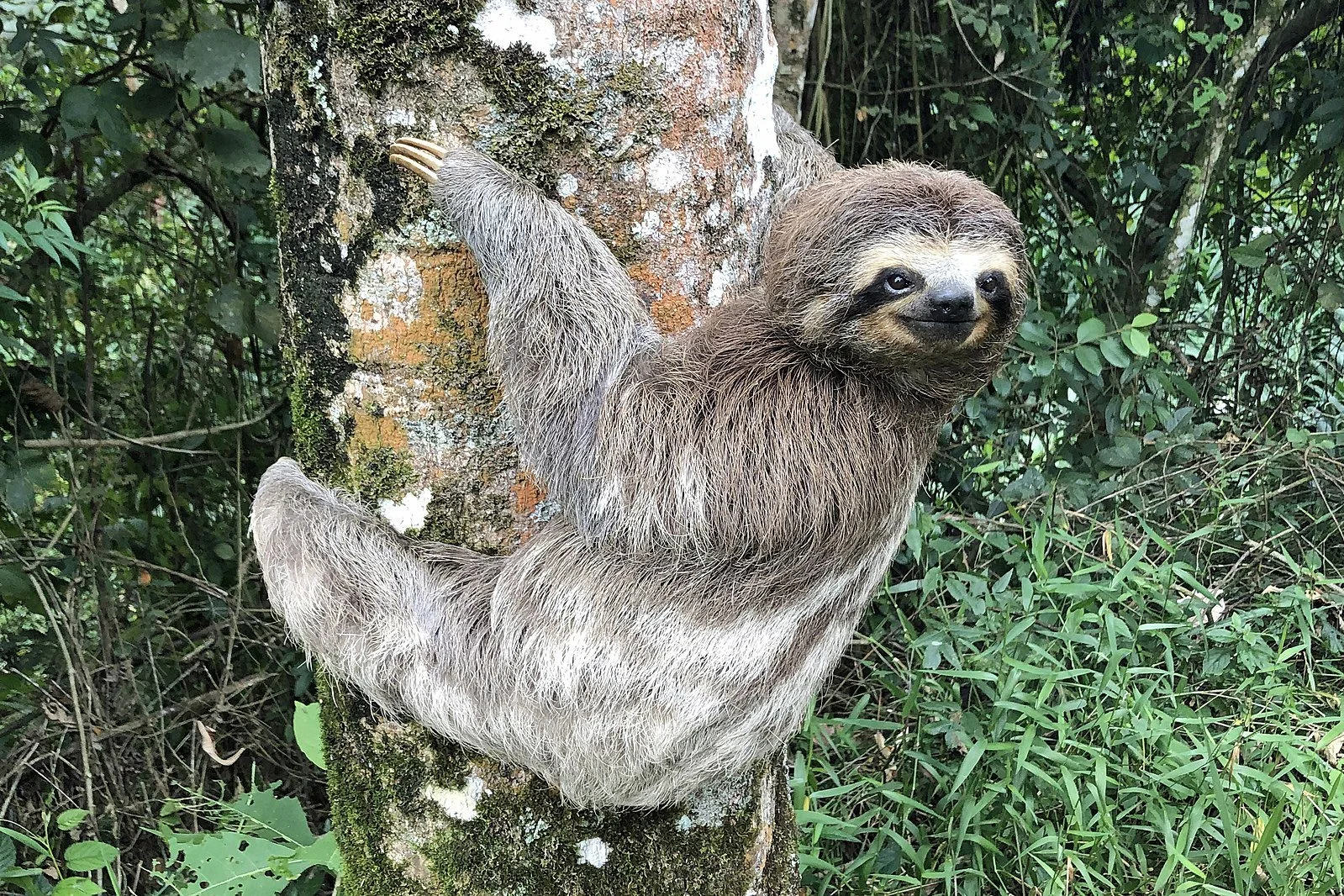How is coffee decaffeinated?
The short answer
Decaffeinated coffee is made by removing caffeine molecules from coffee beans using methods like chemical solvents, the Swiss Water® Process, or supercritical carbon dioxide. However, decaf coffee still retains a small amount of caffeine.
The long answer
There's no such thing as a coffee bean that doesn't contain caffeine. So how in the world do caffeine molecules get removed from coffee beans to create decaffeinated coffee?
Caffeine molecule "3D structure image of CID 2519 (caffeine)" by PubChem is part of the public domain.
Here are the three most common methods that coffee is decaffeinated:
Option #1: Chemical solvents
Chemical solvent decaffeination removes caffeine using substances like methylene chloride or ethyl acetate. There are two ways these solvents are used to decaffeinate coffee:
Direct method: Here, green (i.e. unroasted) coffee beans are steamed and then directly soaked in solvents. The caffeine binds to these chemicals, which is then washed away, leaving the beans less caffeinated.
Indirect method: The beans soak in hot water, leaching out caffeine. This water, now full of caffeine, is treated with solvents that remove the caffeine. The decaffeinated water is then reunited with the beans, which reabsorb their flavors.
In both methods, the final step is a thorough cleaning to ensure no solvent residues are left. The beans are then dried and ready for roasting, where any last traces of solvent are burned away.
This method is becoming less popular due to the potential toxicity of the solvents if consumed in high amounts. However, the US Food and Drug Administration assures consumers that trace amounts of methyl chloride are safe to consume.
Option #2: Water process (AKA the Swiss Water® Process)
This process is also commonly referred to as the Swiss Water® Process, a trademarked name that is ironically owned by a Canadian company. Here's how it works:
A batch of green coffee beans is soaked in hot water to release the caffeine and flavor components. These beans are then discarded, which leaves behind flavorful (and caffeinated) water known as "green coffee extract," or GCE.
The GCE then passes through a carbon filter which captures caffeine while allowing flavor compounds to pass through. This GCE is now decaffeinated but still retains the flavors of the green coffee beans.
The decaffeinated GCE is used to soak a new batch of green coffee beans. Since this liquid already contains coffee flavor compounds, it doesn't extract flavor from the beans, only the caffeine. The GCE-soaked green coffee beans are now decaffeinated and can be dried and roasted for decaf coffee production.
The remaining GCE liquid is then passed through the carbon filter again to remove the caffeine and be reused for the next batch of beans to be decaffeinated.
Option #3: Supercritical carbon dioxide
First, let's define what "supercritical carbon dioxide (CO₂)" means, and no, it's not when the CO₂ is giving you a hard time.
"Carbon dioxide pressure-temperature phase diagram" by Ben Finney and Mark Jacobs is licensed under CC0 1.0 DEED.
When CO₂ is subjected to a high enough pressure and temperature, it transforms into what is known as a supercritical fluid state. A supercritical fluid acts like both a gas and a liquid simultaneously. In other words, supercritical fluid spreads out easily (low surface tension) and flows smoothly (low viscosity) like gases, but has a high density similar to that of a liquid.
Weird.
The strange properties of supercritical CO₂ make it an excellent tool for coffee decaffeination. Here's how the process works:
First the beans are soaked in water. Then the moist beans are placed in a chamber with supercritical CO₂. The supercritical CO₂ behaves like a gas and penetrates the coffee beans, while also acting like a liquid by dissolving and extracting the caffeine.
After the decaffeination process, the supercritical CO₂ and the beans go their separate ways. The caffeinated supercritical CO₂ is moved to a separate chamber. Upon releasing the pressure, the CO₂ turns back into a gas, and the extracted caffeine is collected for use in various products, like energy drinks. Meanwhile, the beans are now ready to be dried, roasted, and sold as decaf coffee.
How do you know which method is used to make your decaf coffee?
There are no labeling rules that require coffee companies to disclose which method they use. But you can refer to the Check Your Decaf database to look up your favorite bean to find out its decaffeination process.
Does decaf coffee have any caffeine?
Yes, decaffeinated coffee still contains small amounts of caffeine. The average 8 oz cup of regular coffee has around 95mg of caffeine, whereas the average cup of decaf has about 5-10mg of caffeine.
Curious about how the world works?
Today You Should Know is a free, weekly email newsletter designed to help you learn something new every Friday.
Subscribe today 👇
Check out some other curious questions:
Sources
Alicat Scientific. (2023, August 2). Optimizing supercritical CO2 solid-liquid extraction with Coriolis mass flow. Alicat Scientific. https://www.alicat.com/knowledge-base/why-supercritical-co2-is-super-cool/
Gannon, M. (2019, April 21). How is decaf coffee made?. LiveScience. https://www.livescience.com/65278-how-decaf-coffee-is-made.html
Loppnow, A. (2020, October 29). Decaffeinated Coffee: How It’s Made. Jim’s Organic Coffee. https://www.jimsorganiccoffee.com/blogs/the-coffee-scoop/decaffeinated-coffee-how-it-s-made
Peet’s Coffee. (2023, July 27). Seven Myths about Decaffeinated Coffee. Peet’s Coffee. https://www.peets.com/blogs/peets/seven-myths-about-decaffeinated-coffee
Petruzzello, M. (n.d.). How Is Coffee Decaffeinated?. Encyclopædia Britannica. https://www.britannica.com/story/how-is-coffee-decaffeinated
SwissWater Decaf. (2013). SWISS WATER® Process animation video. YouTube. Retrieved January 13, 2024, from https://www.youtube.com/watch?v=tAEQ4G-1jTQ&ab_channel=SwissWaterDecaf.






It’s like an American accent but with calendars.